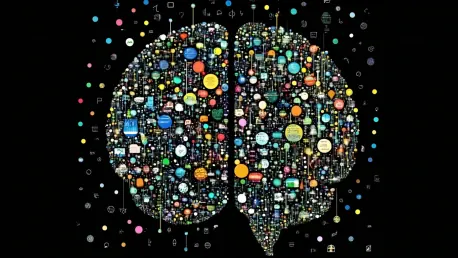The intricate dynamics of how the human brain processes language stand as one of the most fascinating areas of neuroscience. A groundbreaking study by neuroscientists from MIT reveals that artificial languages, also known as conlangs, engage the brain in ways similar to natural languages. This discovery not only broadens our understanding of language processing but also challenges existing paradigms, opening new avenues for future research in cognitive neuroscience and linguistics.
The Study’s Groundbreaking Insights
Researchers at MIT embarked on an innovative study to decode the neural processes involved when the brain encounters constructed languages. This exploration aimed to determine whether artificially designed languages are processed in the same neurological regions as naturally evolved ones. By focusing on the engagement of the brain’s language network, the researchers unveiled that the brain’s versatility in handling different linguistic systems extends beyond traditional expectations.
One of the most significant discoveries from this study is the activation of the brain’s language-processing areas, regardless of a language’s evolutionary history. fMRI scans indicated that participants proficient in constructed languages exhibited similar neural activation patterns when processing these languages as they did with their native tongues. This remarkable finding suggests that the brain’s linguistic network is highly adaptable, capable of processing both evolved and artificially created languages with similar efficiency.
Engaging the Language Network
The research delved deeply into how various constructed languages, such as Esperanto and Klingon, are processed by the brain. Despite being systematically created by individuals rather than evolving naturally within communities, conlangs like Na’vi, High Valyrian, and Dothraki were found to engage language networks traditionally associated with natural languages. This finding corroborates that the brain’s language network is not strictly reserved for languages with long historical backgrounds.
The brain engages constructed languages by activating the same regions involved in natural language processing. This implies that the ability to understand and produce meaningful communication is not limited to the languages that have evolved over millennia. Instead, the brain’s adaptability allows it to process and comprehend linguistic systems that have been deliberately created, provided they convey rich, contextual meanings.
Cognitive and Neural Mechanisms
The pivotal insight from the study is the brain’s focus on meaningful communication rather than the age or evolutionary background of the language. Both natural and constructed languages convey contextual information about the external world and internal states, which is key to engaging the brain’s language faculties. This means that the brain’s engagement with language is rooted in its capability to express and interpret real-world meanings rather than being tied to the evolutionary history of the language.
Contrasting constructed languages with computer programming languages highlights unique facets of neural activation. Unlike conlangs, programming languages engage brain regions involved in logical problem-solving – a stark difference that underscores how human languages are processed. This distinction emphasizes that human languages, whether natural or constructed, serve a unique role in conveying rich, nuanced information that differs fundamentally from the procedural and logical nature of programming languages.
Universal Processing and Adaptability
Additionally, the study found that the naturally evolved history of a language is not a prerequisite for cognitive engagement. Newly invented languages, despite their recent origins, activated neural circuits similar to those used for ancient natural languages, indicating a universal processing mechanism. This universal engagement highlights the brain’s inherent flexibility and its capacity to process diverse linguistic systems, regardless of their origin or age.
These revelations have profound implications for traditional linguistic theories that emphasize evolutionary and communal aspects of language development. The study suggests that essential components for engaging the brain’s language network transcend historical and social origins of language. This challenges the idea that only languages shaped by long-term communal interactions can activate the brain’s language faculties effectively.
Future Research Directions
Building on these findings, researchers are poised to explore the neural processing of Lojban, a language constructed to reduce ambiguity and enhance logical clarity. This further investigation aims to deepen the understanding of how different language features influence brain activation patterns, potentially uncovering new insights into the adaptability and flexibility of the brain’s language processing mechanisms.
MIT’s researchers employed advanced neuroimaging technologies such as fMRI to analyze participants’ brain responses. By maintaining an objective focus on empirical data, the conclusions drawn in this study present an unbiased and comprehensive view of language processing mechanisms. Their empirical approach allowed for a thorough and objective analysis of how different linguistic systems engage the brain’s language processing networks.
Integrating Findings and Perspectives
The complex way our brain processes language continues to be one of the most captivating subjects in neuroscience. Recently, researchers from MIT undertook a study that unveils surprising insights into how the human brain interprets artificial languages, known as conlangs. The findings suggest that the brain engages with these constructed languages much in the same way it does with natural languages.
This revelation is significant as it enriches our comprehension of language processing mechanisms and shakes up existing theories. Artificial languages, often created for fun, artistic expression, or practical purposes like enhancing communication, share neural pathways with natural languages. This result implies that the brain’s ability to adapt to new language structures is more flexible and universal than previously thought.
Furthermore, the study hints at novel research directions in the fields of cognitive neuroscience and linguistics. It opens up exciting prospects for understanding how language learning and usage may be fundamentally ingrained in our neural architecture, regardless of the language’s origin.
Current paradigms about language acquisition and processing might need revision in light of these findings. This MIT study stands as a testament to the ever-evolving nature of human understanding, pushing the boundaries of what we know about cognition and communication. As we continue exploring these dynamics, we can expect groundbreaking discoveries that will further illuminate the extraordinary capacities of the human brain.









